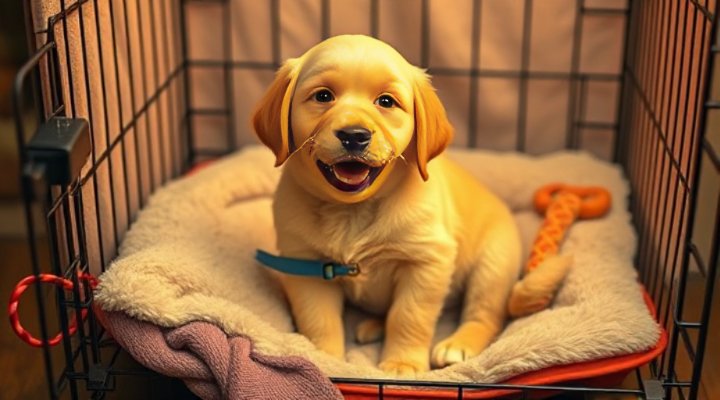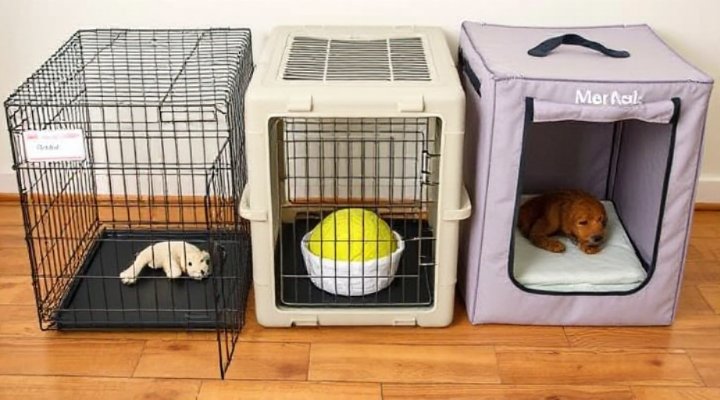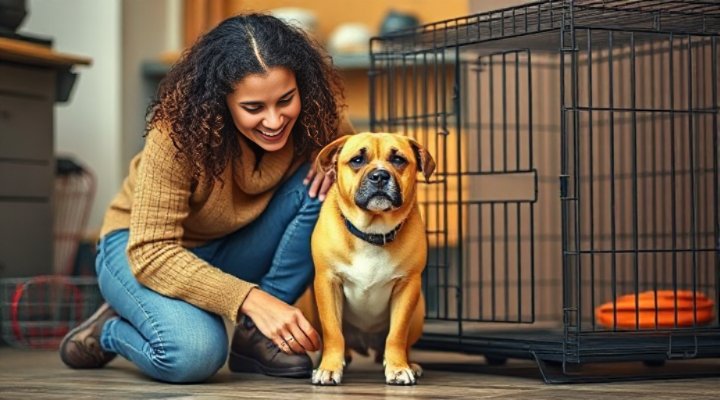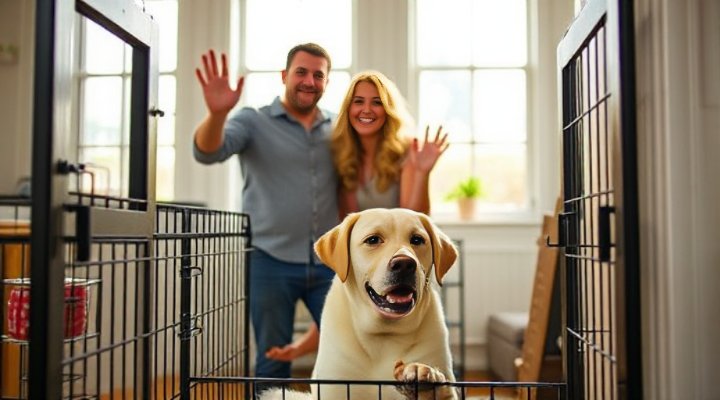Crate training is one of the most valuable skills you can teach your dog, creating a safe space they’ll love. Whether you’re starting with a puppy or introducing an adult dog to crate training, this guide will walk you through every step of the process.

Why Crate Training Matters for Your Dog
First and foremost, crate training provides numerous benefits for both you and your canine companion. Dogs are den animals by nature, and a properly introduced crate becomes their personal sanctuary. It helps with:
- House training (dogs naturally avoid soiling their sleeping area)
- Preventing destructive behaviors when unsupervised
- Creating a safe space during travel or emergencies
- Reducing anxiety by providing a consistent personal space
According to the American Veterinary Medical Association, crate training when done properly can significantly reduce stress for dogs in various situations.
Choosing the Right Crate
Before beginning crate training, you’ll need to select the appropriate crate for your dog. Our guide on how to choose the right dog crate covers this in detail, but here are the basics:

- Size: Your dog should be able to stand, turn around, and lie down comfortably
- Type: Wire crates offer visibility, plastic provides more den-like security, soft-sided are great for travel
- Location: Place the crate in a quiet but social area of your home
Step-by-Step Crate Training Process
Step 1: Introduction to the Crate
Begin by making the crate inviting. Place soft bedding inside and leave the door open. Sprinkle treats near the entrance and gradually further inside. Let your dog explore at their own pace.

Step 2: Creating Positive Associations
Feed meals near the crate, then eventually inside it. Use special treats that your dog only gets in the crate. Praise calmly when they enter voluntarily. Remember, we want the crate to equal happy times!
Step 3: Gradual Confinement
Once your dog is comfortable entering the crate, begin closing the door for short periods while you’re present. Start with just a few seconds, gradually increasing the time. Stay nearby and offer praise.
Step 4: Extending Crate Time
As your dog becomes more comfortable, you can begin leaving the room for short periods. The scientific approach to dog anxiety shows that gradual exposure is key to success.

Common Crate Training Challenges
Even with the best approach, you might encounter some hurdles:
- Whining or barking: Don’t reward this behavior by letting them out. Wait for a moment of quiet first.
- Accidents in the crate: This usually means the crate is too large or the dog was left too long.
- Reluctance to enter: Go back a step in training and rebuild positive associations.
For more on addressing behavioral issues, check out our article on creating harmonious relationships between pets.
Advanced Crate Training Tips
Once your dog is comfortable with basic crate training, you can enhance the experience:
- Use a command like “crate” or “kennel” when it’s time to enter
- Rotate special crate-only toys to maintain interest
- Consider covering the crate with a light blanket for anxious dogs
- Gradually move the crate to different locations to generalize the behavior

When to Seek Professional Help
While most dogs adapt well to crate training, some may need extra help. If your dog shows extreme anxiety or panic in the crate, consult a professional. Our guide on finding the right dog trainer can help you locate qualified assistance.
The ASPCA’s animal behavior resources also offer excellent guidance for challenging cases.
Final Thoughts on Crate Training Success
Remember, crate training should always be a positive experience. Never use the crate as punishment. With patience and consistency, your dog will come to see their crate as a safe haven – their very own bedroom in your home.
For more training tips, explore our secrets from dog whisperers to deepen your bond with your pet.
Related Keywords: dog crate training, how to crate train a puppy, crate training schedule, best crate for dogs, crate training benefits, dog anxiety solutions, positive reinforcement training

